
Liechtenstein, officially the Principality of Liechtenstein, is a German-speaking microstate situated in the Alps and in the southwest of Central Europe. The principality is a semi-constitutional monarchy headed by the Prince of Liechtenstein; the Prince's extensive powers are equivalent to those of a President in a semi-presidential system.
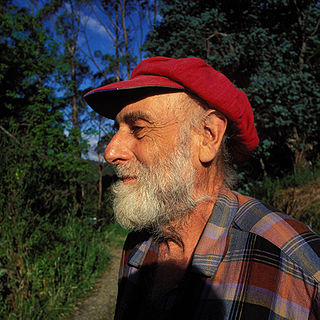
Friedrich Stowasser, better known by his pseudonym Friedensreich Regentag Dunkelbunt Hundertwasser, was an Austrian visual artist and architect who also worked in the field of environmental protection.
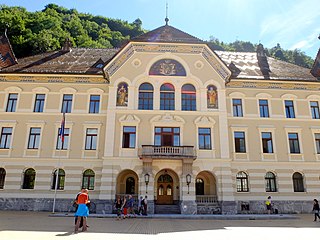
Vaduz is the capital of Liechtenstein and also the seat of the national parliament. The town, which is located along the Rhine River, has 5,696 residents.

The coat of arms of Liechtenstein is the coat of arms of the ruling Prince of Liechtenstein, currently Hans-Adam II. As the sovereign emblem of the Prince, its use is restricted to the Prince and members of his House, though private individuals are permitted to use the arms if it is in the interest of the State. The arms are a history of the House of Liechtenstein and show some of the different territories and families with which it has been connected, either by acquisition or by marriage.

Liechtenstein Castle is a privately-owned castle near Maria Enzersdorf in Lower Austria, bordering Vienna. It is on the edge of the Wienerwald. The castle, originally built during the 12th century, was destroyed by the Ottomans in the siege of Vienna in 1529, and again in the Battle of Vienna in 1683, and it remained in ruins until 1884, when it was rebuilt.
The German National Movement in Liechtenstein was a Nazi party in Liechtenstein that existed between 1938 and 1945.

Triesen is the third largest of Liechtenstein's municipalities. It contains several historic churches dating from the fifteenth century. It also has a weaving mill from 1863 that is considered a historical monument. The population is around 5,275.

The Kunstmuseum Liechtenstein is the state museum of modern and contemporary art in Vaduz, Liechtenstein. The building by the Swiss architects Meinrad Morger, Heinrich Degelo and Christian Kerez was completed in November 2000. The museum collection of international modern and contemporary art is also the national art collection of the Principality of Liechtenstein. In 2015, the new Hilti Art Foundation exhibition building was added to the Kunstmuseum. This important private collection from Liechtenstein comprises outstanding works of classical modernism and contemporary art.
The Prince of Liechtenstein Foundation is a portfolio of private companies, museums, and art collections owned by the Princely Family of Liechtenstein. It is essentially a cap for a multitude of investments, such as the LGT Group, the Hofkellerei wineries, Wilfersdorf Agricultural and Forest Company, RiceTec, and real estate holdings in Vienna, Austria. As of 2012, there were 15 companies and 2 museums owned by the Foundation.
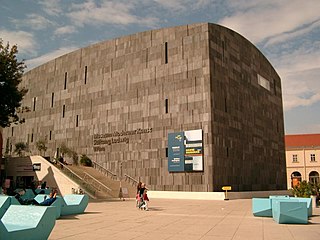
Mumok is a museum in the Museumsquartier in Vienna, Austria.
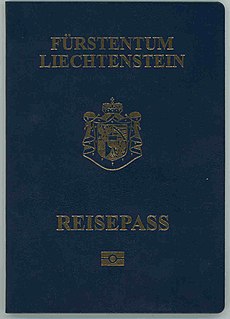
Liechtenstein passports are issued to nationals of Liechtenstein for the purpose of international travel. Beside serving as proof of Liechtenstein citizenship, they facilitate the process of securing assistance from Liechtenstein consular officials abroad.

The Liechtenstein City Palace is a residential building at Bankgasse 9, in the first district of Vienna, Innere Stadt. The palace was built from 1692 to 1705 by the Italian architect Domenico Martinelli and the Swiss architect Gabriele Gabrieli.

The Anabaptist Museum is a part of the open-air museum Museumsdorf Niedersulz. The museum is located in the village of Sulz im Weinviertel, about 45 km north of Vienna in the province of Lower Austria. The museum houses an exhibition about the history of Anabaptist groups in Austria with a focus on the Hutterites.
Liechtenstein heraldry is the form of heraldic art found in the country of Liechtenstein. It does not have a heraldic body of its own, relying on primarily German influences through the ruling house. It follows the German-Nordic tradition.
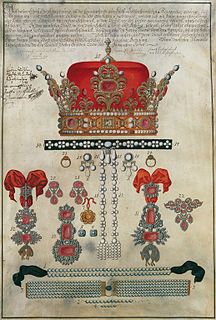
The Ducal hat of Liechtenstein is a former crown of the Princes of Liechtenstein, who were also Dukes of Troppau and Jägerndorf. It went missing in the 18th century.

The Prince Regnant of Liechtenstein is the monarch and head of state of Liechtenstein. The Liechtenstein family, after which the sovereign principality was named in 1719, hails from Liechtenstein Castle in Lower Austria, which the family possessed from at least 1140 to the thirteenth century, and from 1807 onward. It is the only remaining European monarchy that practises strict agnatic primogeniture, meaning only first-born males may inherit the throne.

Liechtenstein Homeland Service was a political party in Liechtenstein that advocated corporate statism and the abolition of party politics.
This is an index of Liechtenstein related topics.

The Postal Museum is a postal museum in Vaduz, Liechtenstein. It is a branch museum of Liechtenstein National Museum.















